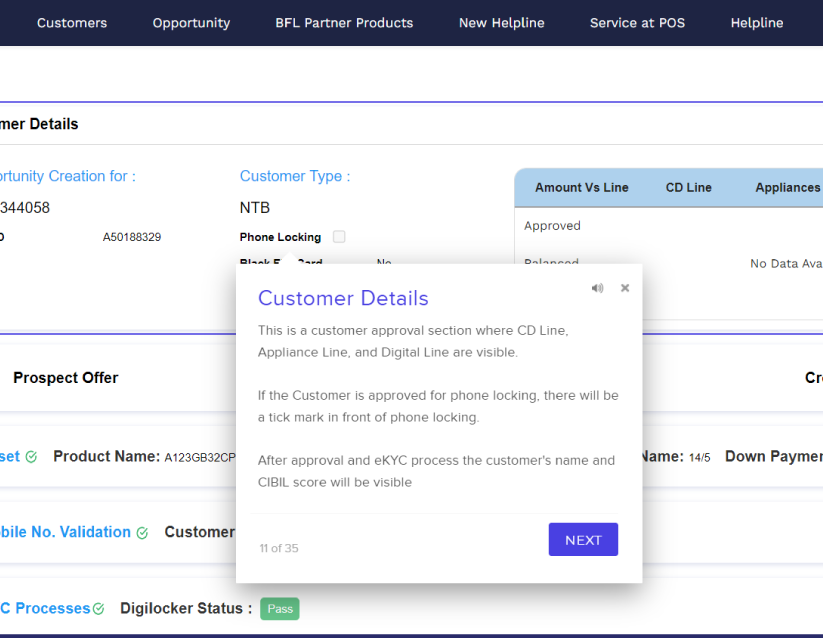Mark is excited about leading a new project with his team of seventeen. However, after project training, only five members truly grasp the project's requirements.
The rest cite challenges such as:
- “It's tough to wrap our heads around the new changes”
- “Why can't we just stick to what we already know?”
- “We have other deadlines and don't have the time to learn new software”
What can Mark do in such scenarios?
The answer is hands-on, practical experience seamlessly integrated into their workflow, saving their time and avoiding confusion.
This approach, a.k.a on-the-job training, proves useful in employee onboarding, project management, software training and enterprise-related processes.
Here's all that we will cover:
- What Does On-the-Job Training Mean?
- Examples of On-the-Job Training
- Benefits of On-the-Job Training
- Drawbacks of On-the-Job Training
- Components of Successful On-the-Job Training
- On-the-Job Training Best Practices for 2026
- How Gyde Supercharges On-the-Job Software Training Approach?
What Does On-the-Job Training Mean?
On-the-job training, commonly referred to as OJT, embodies an employee training approach rooted in the notion that skill development occurs seamlessly during the course of work. This methodology eliminates the need for dedicated time slots or lengthy seminars and training sessions.
In essence, employees acquire the requisite skills and knowledge essential for their roles directly within the work environment, learning on the go, making it easier for them to do their jobs efficiently and effectively.
This concept aligns with the modern principle of learning in the flow of work, where guidance, resources, and feedback are available exactly when and where employees need them, without disrupting productivity.
Examples of On-the-Job Training
1/ Mentorship Programs OR ShadoAwing
On-the-job training (OJT) can be illustrated in mentorship programs and shadowing experiences, underlining the importance of human interaction in the learning process.
Healthcare organizations, for instance, routinely implement mentorship programs to assist medical professionals in instilling practical experience. Similarly, job shadowing opportunities are provided within manufacturing and engineering firms, giving employees insight into complex processes and workflows.
This immersive approach involves new team members closely collaborating with seasoned colleagues or mentors, ensuring hands-on guidance and training within the authentic work environment.
2/ Job Rotation
Job rotation is a type of on-the-job training that involves moving employees between different organizational roles or departments. This technique offers several benefits, such as encouraging employee flexibility, reducing turnover rates, alleviating stress for employees in manual labour roles, preventing burnout, and boosting new ideas and perspectives.
It can also help employees gain knowledge in various areas, improve learning agility, raise job safety, and make the workforce more flexible. Examples of job rotation include programs offered by companies like Emerson, where employees undergo a two-year rotating program with postings in different company areas.
3/ Simulations and Role-Playing
Simulation training can be more cost-effective than traditional on-the-job training methods, as it reduces the need for assembling large groups of trainees and minimizes the risks involved. It exposes your employees to all desired experiences rather than waiting for similar scenarios to occur organically on the job.
Meanwhile, role-playing allows employees to practice and refine their skills in a risk-free environment, improving their job performance and helping them learn more effectively. These methodical exercises can help managers identify areas where employees need more training or coaching, allowing for targeted interventions.
4/ E-Learning Platforms
E-learning platforms are web-based training systems that provide a flexible and cost-effective way to deliver on-the-job training to employees. Companies use them to provide training on various topics, including compliance, safety, and job-specific skills.
These platforms focus on hosting online courses, pre-recorded webinars, and more self-paced learning content to help your employees train and develop better.
5/ Digital Adoption Platforms
Digital adoption platforms(DAPs) live inside your software, giving your employees step-by-step guidance and curbing insufficient application usage. Such platforms provide walkthroughs, helpful tooltips explaining buttons, and easy-to-understand articles for deeper dives. So, no more switching tabs or digging through paper manuals to find information!
For example, imagine your employees entering data into a sales app. A DAP can:
- Suggest what to type in each field, helping them avoid mistakes.
- Show them how to find and use the right information.
- Remind them why each piece of data is important.
This means faster, more accurate data entry and better-quality information in your app.
Benefits of On-the-Job Training
On-the-job training (OJT) offers several benefits for both employees and employers.
Benefits for Employees
- Skill Development:
On-the-job training benefits employees by acquiring practical skills directly related to their job responsibilities. This hands-on experience is often more effective in developing job-specific skills than theoretical training.
- Immediate Application:
Employees can apply what they learn immediately in a real-world work setting. This practical experience helps them understand the context and challenges associated with their role.
- Increased Confidence:
The opportunity to practice tasks in a real work environment boosts employees' confidence. They feel more capable and self-assured in their roles as they become more proficient.
- Personalized Learning:
OJT can be tailored to individual learning styles and needs. This personalized approach enhances training effectiveness and ensures that employees grasp concepts more efficiently.
- Networking Opportunities:
Working closely with colleagues and supervisors during on-the-job training provides employees with valuable networking opportunities. Building relationships within the organization can be beneficial for career growth.
Benefits for Employers
- Cost-Effective:
On-the-job training is often more cost-effective than external training programs. It eliminates the need for off-site training facilities, travel expenses, and external trainers.
- Customization:
Employers can customize on-the-job training to align with specific job requirements and organizational goals. This ensures that employees are equipped with the skills needed for their roles.
- Higher Retention:
Employees receiving effective on-the-job training are likelier to stay with the organization. Investing in employees' professional development fosters loyalty and reduces turnover.
- Increased Productivity:
OJT minimizes the learning curve associated with new hires, leading to quicker integration into the workforce. This results in improved employee performance and productivity as they become proficient in their roles faster.
- Knowledge Transfer:
Experienced employees can pass on their knowledge and expertise directly to new hires. This helps preserve institutional knowledge and ensures that skills are transferred within the organization.
Drawbacks of On-the-Job Training
1. Inconsistent Quality:
Issue: Training quality can vary based on the mentor's skills.
Solution: Create a system to ensure consistent training by monitoring and maintaining quality. This could involve establishing quality assurance mechanisms to track and uphold training standards.
2. Time-Consuming:
Issue: Learning on the job can take up much time, affecting overall productivity.
Solution: Implement a structured training plan that blends learning goals with daily tasks. This helps employees manage their time efficiently and get the necessary training without compromising their work.
3. Lack of Formal Structure:
Issue: OJT often lacks a structured curriculum, leading to gaps in learning.
Solution: Develop a formal curriculum that clearly outlines learning objectives, milestones, and assessments for OJT. Use Learning Management Systems (LMS) to organize and deliver training content in a structured manner.
4. Dependency on Mentor Availability:
Issue: OJT effectiveness depends on the availability and expertise of mentors.
Solution: Supplement mentor availability by establishing a self-serve knowledge-sharing platform or documentation system. This ensures that employees can access information and guidance even when mentors are unavailable.
5. Risk of Inefficiency:
Issue: Trial-and-error learning may lead to inefficient work habits.
Solution: Conduct regular performance reviews to identify and address inefficient work habits. Encourage a culture of continuous improvement where employees can suggest and adopt more efficient practices.
6. Resistance to Change:
Issue: Employees may resist the shift to on-the-job training.
Solution: Address resistance by providing information and support. Utilize internal communication channels or refer to a blog discussing the benefits of change to help employees understand and embrace the transition.
7. Safety Concerns:
Issue: Certain industries may require formal safety training in addition to OJT.
Solution: Choose platforms that cover safety protocols. Ensure that safety training is integrated into the OJT process, emphasizing the importance of a safe working environment.
8. Difficulty in Tracking Progress:
Issue: Tracking progress in an informal OJT setting can be challenging.
Solution: Use analytics tools to monitor and evaluate employee progress. This allows for better tracking of learning milestones and areas needing additional attention.
Components of Successful On-the-Job Training
When your organization uses On-the-Job Training (OJT), it shows that you care about helping employees improve their job performance. This brings in talented people and motivates everyone to give their best.
Now, let's dig into what things make this training approach actually work. What makes it doable and effective?
A. Training Needs Analysis:
Training Needs Analysis (TNA) is a method used by L&D professionals to identify employee skill gaps. This helps tailor on-the-job training plans to areas where employees need the most improvement. Designing training that suits employees' unique needs ensures its relevance and direct benefit to individuals.
B. Structured Training Plans:
Setting clear learning objectives defines what employees should learn during training. This provides a roadmap for both trainers and trainees, ensuring everyone knows what to expect. Additionally, microlearning breaks down training into manageable parts, allowing for continuous feedback and ensuring effective learning.
C. Thought-Leader Approach:
While you create these training plans, involve experienced individuals in the process. Seek feedback that helps employees improve without discouraging them, fostering a positive learning environment. Involving thought leaders ensures that training programs can adapt to technological changes, industry trends, and organizational needs.
D. Embrace Technology:
Incorporate technological advancements and solutions in your on-the-job training plan, such as digital adoption platforms, instructional design software, adaptive learning platforms, etc. Whether adopting a new application or enhancing the usage of existing technology, make training more immersive and interactive. This ensures employees are comfortable and proficient in using digital tools.
On-the-Job Training Best Practices for 2026
To ensure your on-the-job training program unlocks the full potential of your employees, consider the SAFE approach:
S - Structure for Optimal Learning:
- Initiating your OJT requires a thorough approach to pinpoint the essential skills and knowledge your trainees must acquire. Tailoring the learning journey to address specific gaps, you can methodically deconstruct it into manageable milestones, articulating a clear sequence of learning activities.
- Choose and ensure that the KPIs(Key performance indicators) align with the overall objectives of the OJT program. For example, if the goal is to improve customer service, relevant KPIs could include customer satisfaction scores or resolution time.
- Next, pick trainers who are experienced, good communicators, patient, and experts in the subject. For a successful OJT, think about adding peer mentoring. When someone with enough experience offers one-on-one guidance, it provides extra support and makes learning more effective.
- Once you've crafted a plan outlining all the goals, timelines for each stage, and the assessment methods, promptly share it with the trainees. Keep them informed about the comprehensive schedule and outline of the OJT. This transparency ensures that everyone is on the same page, fostering clear expectations and avoiding any kind of resistance or confusion.
A - Automate for Enhanced Efficiency:
- Identify repetitive tasks post-structuring. For instance, in employee onboarding, common sections like company policies apply to all departments. Use online tutorials, e-learning, and simulations, supported by tools like LMS/LXP) to standardize training and save time. This allows trainers to invest time in more personalized coaching.
- In OJT for boosting proficiency in essential applications like LMS, CRM, or HRMS, focus on creating accessible knowledge repositories. By using screenshot guidance on software applications, you can develop visually appealing process manuals, user-friendly reference guides, and best practice documents that help employees navigate workflows efficiently and avoid frustration.
F - Feedback for Continuous Improvement:
- Fostering an open environment in OJT involves encouraging trainees to ask questions, voice concerns, and share their experiences. This is achieved by cultivating a positive and supportive learning atmosphere, including group projects, problem-solving activities, and appreciating diverse perspectives.
- Conducting periodic evaluations with trainers helps identify areas for improvement and ensures alignment with organizational goals. Using survey questionnaires, and leveraging online survey tools, makes collecting and visually presenting data efficient for a quick analysis. This continuous effort aids in refining the OJT approach and maximizing its impact.
E - Evaluate for Sustainable Success:
- Assess whether the OJT program is delivered within a reasonable timeframe, balancing the need for comprehensive training with operational requirements.
- Evaluate the cost-effectiveness of the OJT program by comparing the expenses involved against the tangible benefits achieved. This analysis can inform decisions on resource allocation.
- Assess changes in productivity by comparing pre-OJT and post-OJT performance. KPIs may include the time taken to complete tasks, project completion rates, or overall work output.
Remember, effective OJT is not a one-time event but a continuous learning and growth journey. Embrace the SAFE formula, and watch your employees and your organization reach new potential heights!
How Gyde Supercharges On-the-Job Software Training Approach?
Having delved into the details of on-the-job training, let's explore a game-changing tool to expedite its implementation on software training: Gyde.
Gyde is an AI-powered digital adoption platform that embeds itself within any enterprise application. It proactively anticipates and displays help resources in response to user actions within the application, enabling continuous learning in the natural flow of work.

It helps L&D/HR leaders provide on-the-job training for employee development and get the maximum return on software investments.
Here's how Gyde makes training easy-to-follow for your employees:
- Micro-learning on demand: It delivers bite-sized software training resources in the form of audio-visual walkthroughs and contextual help articles when employees need them, as it is easily integrated into their workflow.
- Analytics to evaluate usage: Leverage Gyde's analytics to track employee engagement, including users interacting with walkthroughs, help articles viewed, and videos watched. Analyze the data for informed decision-making and improved training strategies.
- Fast implementation & customization: Gyde’s no-code DAP makes it easy for anyone to create personalized training content that aligns with your specific workflows and branding.
- Superior support & security: Gyde offers faster customer support turnaround times and stellar services once you begin using it. Your training data is also secure, adhering to strict ISO and GDPR compliance standards.
Schedule a free consultation with the training experts and discover how Gyde’s smart Digital adoption platform can transform your software training programs.
FAQs
Is on-the-job training only for entry-level positions?
No, on-the-job training can benefit employees at all levels, including those seeking to acquire new skills, adapt to new technologies, or transition to different organizational roles.
How can employees make the most of on-the-job training?
Actively engage in learning, seek feedback, ask questions, and apply the knowledge and skills acquired during OJT to enhance job performance.
Who typically conducts on-the-job training?
OJT can be conducted by experienced employees, supervisors, mentors, or designated trainers within the organization.
What is the fundamental difference between on-the-job training (OJT) and off-the-job training?
On-the-job training (OJT) occurs within the workplace, where employees learn by performing tasks and responsibilities directly related to their jobs.
Off-the-job training occurs outside the workplace, often in a training center, involving formal instruction, simulations, or theoretical learning.

